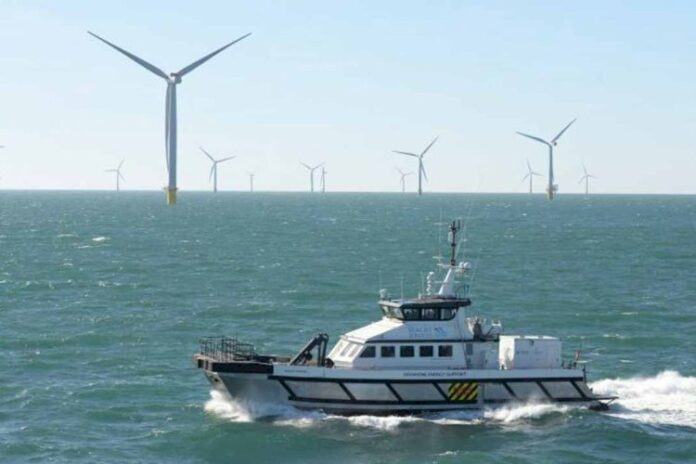A €3.6 million European project to study the psychological and physiological wellbeing of crew being transferred to offshore wind farms in rough waters, has produced a sail/no sail decision-support tool for marine coordinators, as well as a new understanding of seasickness and how it develops.
Unscheduled operations and maintenance operations on offshore wind installations account for almost a quarter of the lifetime cost of an offshore farm, but a large portion of that is time wasted in failed crew transfers or workers unable to carry out their duties as a direct result of adverse weather conditions.
The two-year DemoWind2-funded Improving the Safety and Productivity of Offshore Wind Technicians in Transit (SPOWTT) project, coordinated by the Offshore Renewable Energy (ORE) Catapult through its O&M Centre of Excellence collaboration with the University of Hull, completed in March 2020. The project involved seven partners from across Europe, including Siemens Gamesa Renewable Energy (SGRE), the University of Hull, marine coordinators SMC Ltd, Dutch research institutes MARIN and TNO, and BMO Offshore, a data service provider to the offshore wind industry.
The data-driven model seeks to understand the complex relationship between environmental conditions and vessel design and their combined impact on technicians and has given us a new understanding of seasickness and how likely it is to develop. Studies were carried out, both in the field and in controlled conditions, on various vessel types to understand how they behave in different weather conditions. Empirical data was also gathered directly from the technicians themselves during transit over a period of several months.
TNO used this seasickness model, coupled with vessel behaviour data from MARIN (validated with measurements by BMO), to provide more realistic logistics simulations to assist offshore wind farm planners. UK marine consultants SMC Ltd. is building on this to commercialise decision-support software aimed at marine coordinators, which could transform the industry’s approach to technician-led operations and maintenance activities.
Andrew Stormonth-Darling, ORE Catapult’s Project Manager, said:
“This project has been ground-breaking. For the first time, we have used data, gathered in laboratories and out in the field, to truly understand the psychological and physiological impacts on offshore wind farm technicians during transit.
The model and tool will improve the health, safety and wellbeing of technicians and the productivity of offshore wind farms, allowing wind farm marine coordinators to make more informed decisions on vessel design for particular sites and when to authorise transits.”
Clark McFarlane, Managing Director for Siemens Gamesa Renewable Energy said:
“SGRE is proud to have taken part in this important project; the safety and wellbeing of staff has always been in the core of our business. For anyone to arrive at their place of work in a safer, healthier and more content manner, while additionally delivering efficiency gains through the clever application of technology is great for the future of the industry as a whole. These studies show an industry working hard together with SGRE playing a vital part.”
Dr Fiona Earle, a senior lecturer in psychology and Director, Centre for Human Factors at the University of Hull added:
“Looking at the health, wellbeing, safety and productivity of technicians in CTVs is complex, requiring knowledge of human factors, ship motions and the offshore wind domain. By collaborating in this multi-discipline team, we have been able to increase our understanding considerably about what “sea-sickness” is; how it manifests in technicians; the effects it has on wellbeing, fatigue and fitness to work; and the effect of vessel movements, as well as other factors such as the previous night’s sleep. As well as useful guidance for operators, and input to the decision-support tool, this study has given a great basis for further study into the causes and effects of technician sea-sickness.”



